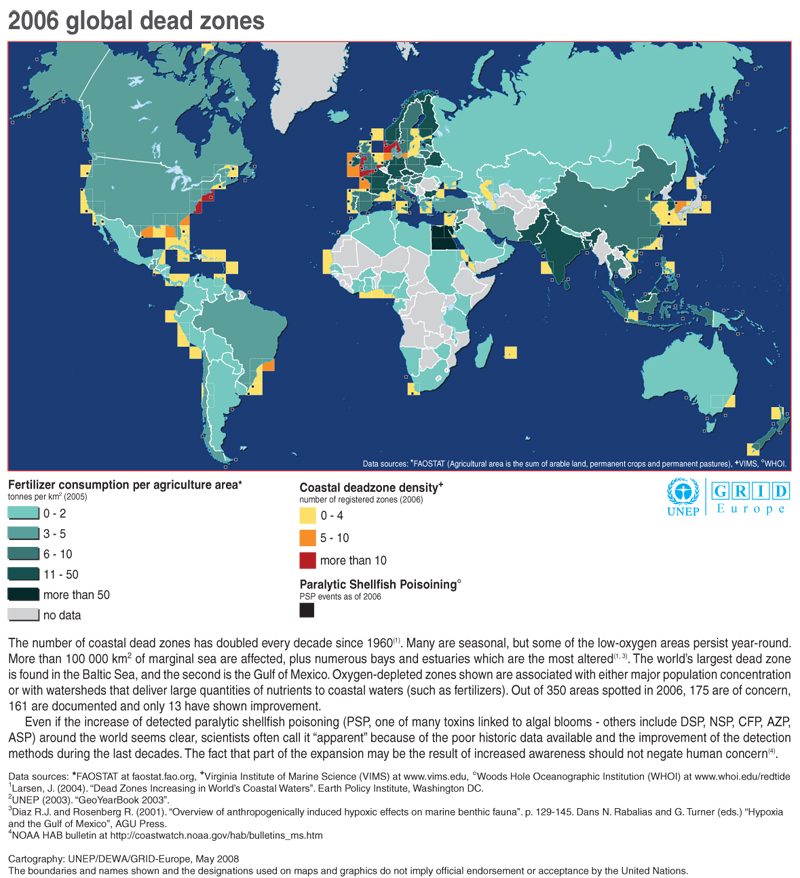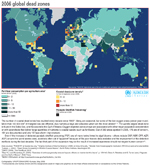Resource
2006 global dead zones
Description
The number of coastal dead zones has doubled every decade since 1960(1). Many are seasonal, but some of the low-oxygen areas persist year-round. More than 100 000 km2 of marginal sea are affected, plus numerous bays and estuaries which are the most altered(1, 3). The world’s largest dead zone is found in the Baltic Sea, and the second is the Gulf of Mexico. Oxygen-depleted zones shown are associated with either major population concentration or with watersheds that deliver large quantities of nutrients to coastal waters (such as fertilizers). Out of 350 areas spotted in 2006, 175 are of concern, 161 are documented and only 13 have shown improvement.

